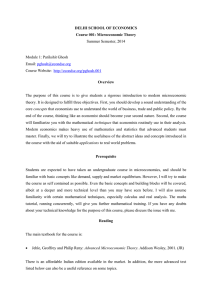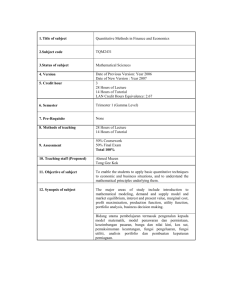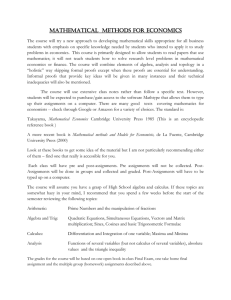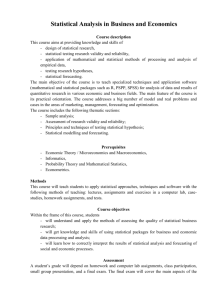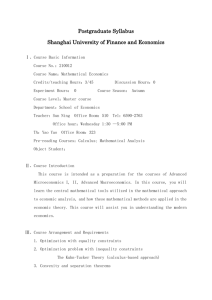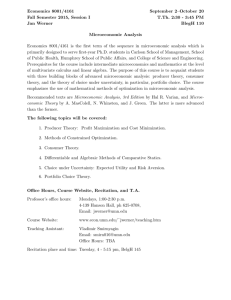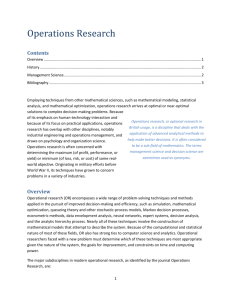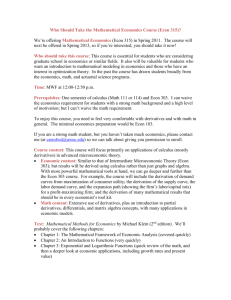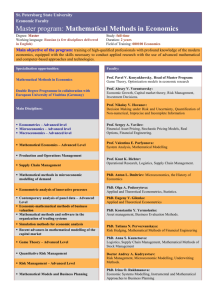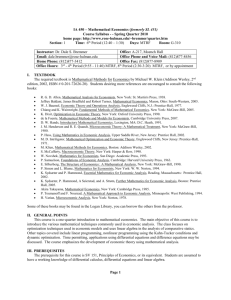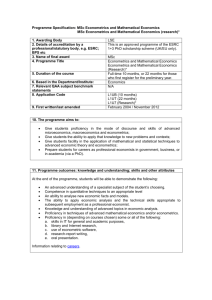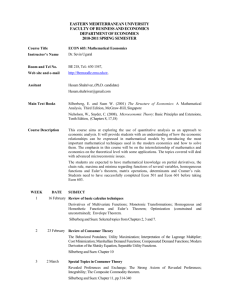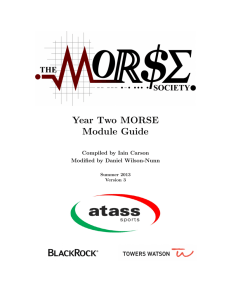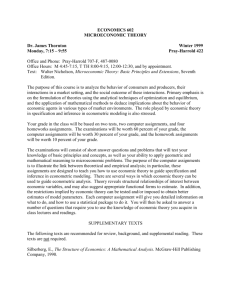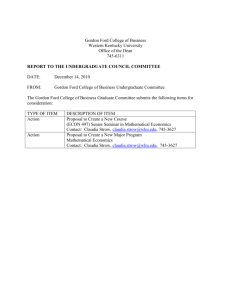Module: I - Quantitative Methods I
advertisement
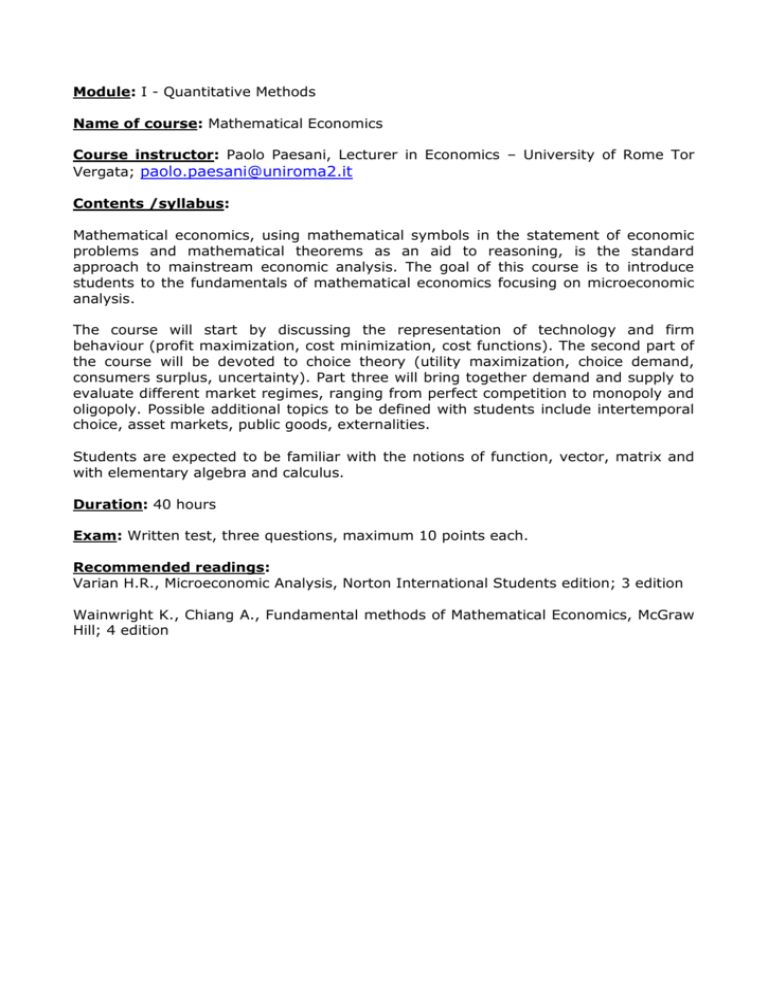
Module: I - Quantitative Methods Name of course: Mathematical Economics Course instructor: Paolo Paesani, Lecturer in Economics – University of Rome Tor Vergata; paolo.paesani@uniroma2.it Contents /syllabus: Mathematical economics, using mathematical symbols in the statement of economic problems and mathematical theorems as an aid to reasoning, is the standard approach to mainstream economic analysis. The goal of this course is to introduce students to the fundamentals of mathematical economics focusing on microeconomic analysis. The course will start by discussing the representation of technology and firm behaviour (profit maximization, cost minimization, cost functions). The second part of the course will be devoted to choice theory (utility maximization, choice demand, consumers surplus, uncertainty). Part three will bring together demand and supply to evaluate different market regimes, ranging from perfect competition to monopoly and oligopoly. Possible additional topics to be defined with students include intertemporal choice, asset markets, public goods, externalities. Students are expected to be familiar with the notions of function, vector, matrix and with elementary algebra and calculus. Duration: 40 hours Exam: Written test, three questions, maximum 10 points each. Recommended readings: Varian H.R., Microeconomic Analysis, Norton International Students edition; 3 edition Wainwright K., Chiang A., Fundamental methods of Mathematical Economics, McGraw Hill; 4 edition
